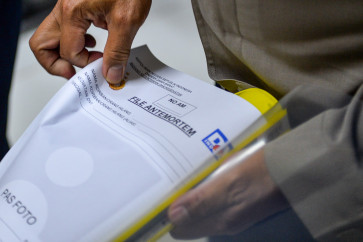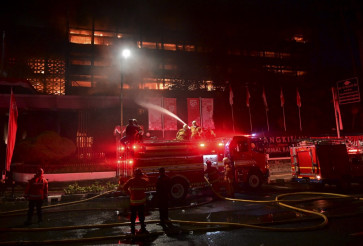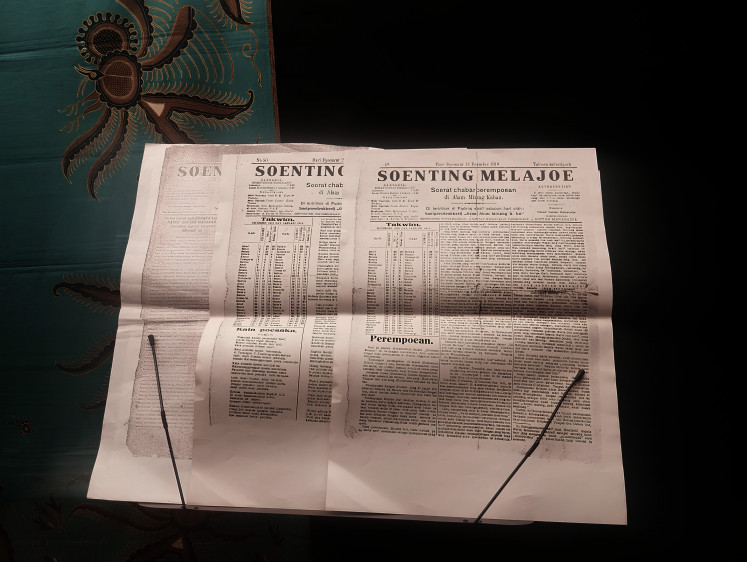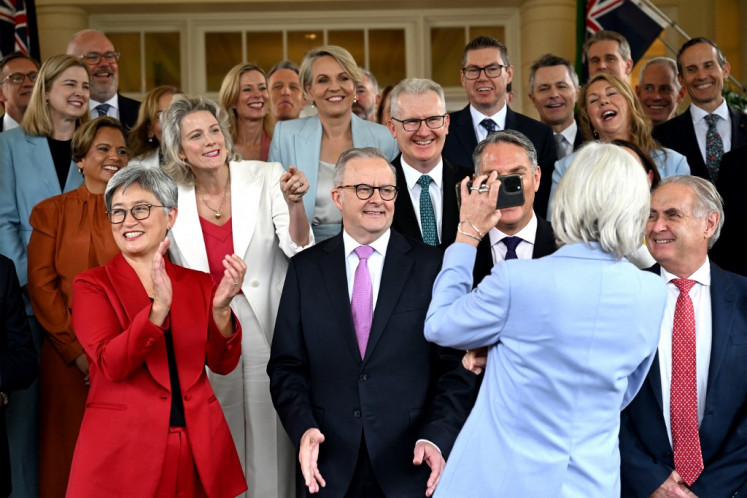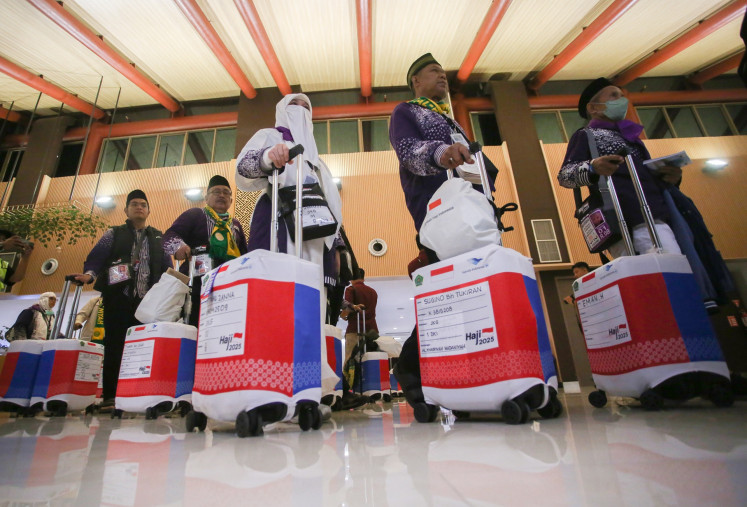Budi Ubrux: Chronicles of life and nation
Budi ‘Ubrux’ Haryono is among the most unique Indonesian contemporary painters whose artistic language is entirely his own.
Change text size
Gift Premium Articles
to Anyone
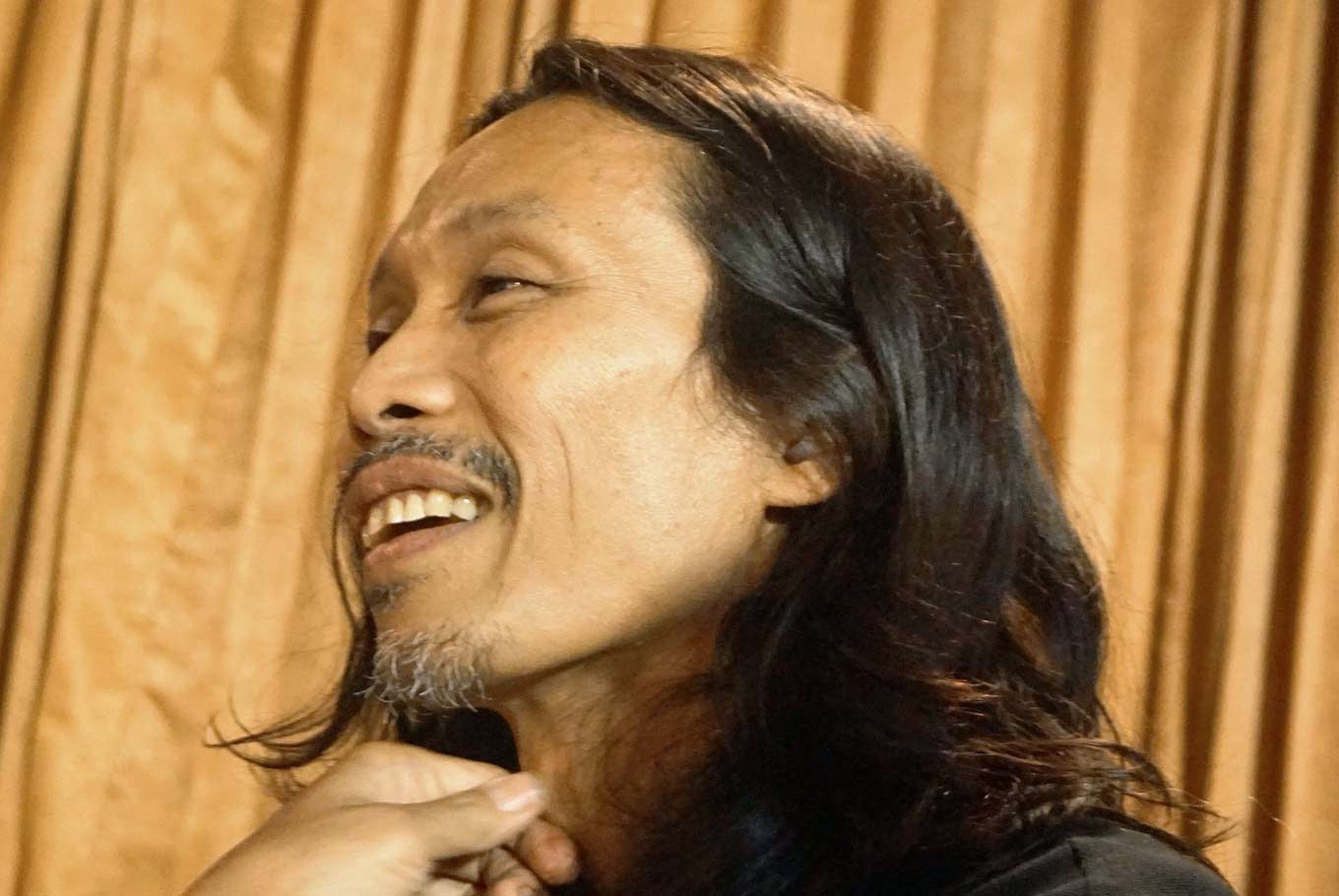 Budi ‘Ubrux’ Haryono is among the most unique Indonesian contemporary painters whose artistic language is entirely his own. (JP/Carla Bianpoen)
Budi ‘Ubrux’ Haryono is among the most unique Indonesian contemporary painters whose artistic language is entirely his own. (JP/Carla Bianpoen)
B
udi Haryono, better known as Ubrux, rose to fame when he created his iconic language made with newspaper headlines, which he finely hand-copied covering the entirety of his images on canvas to express poignant thoughts and comments.
Utterly creepy and profoundly unsettling, the haunting images likening the mummy world, warn and criticize, initially repression and corruption, and later news media that tend to increasingly overwhelm and manipulate real facts, ultimately causing human intellect to malfunction.
Extending this language to foreign newspaper language — and not limiting himself to canvas, his iconic language also put an accent on sculptures, furniture and installations.
Born in 1968 in Bantul, Yogyakarta, the dropout art school initially worked making banners. After a two-year stint in Switzerland as a billboard painter, he held a solo show in Baden, Switzerland.
Back in Indonesia, his painting Immacologi won the prestigious Philip Morris Art Award prize ( 2000 ). It featured newspaper wrapped heads as a metaphor of image-making desires.
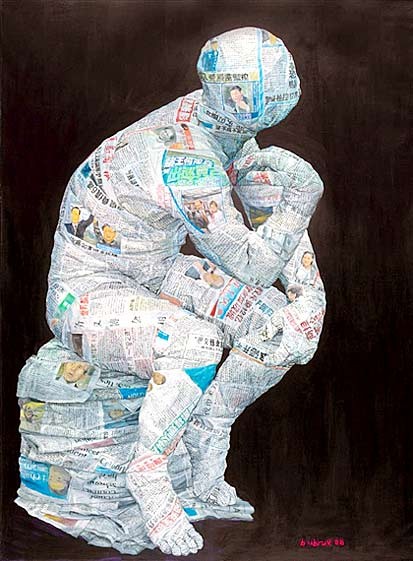
Finely hand painted headlines and brief contents of newspapers wrap around his images that make faceless mummified figures, and the original disappearing under the overwhelming news.
In fact, Ubrux’s concern about manipulating newspapers also relates to photographs and the image-making society, whose real character is hidden behind nice and pleasant images or speeches.
But unable to speak fluently himself, he took to wrapping his images with newspapers whose headings express his thoughts. It is not a physical wrapping though, as he finely hand-paints the precise text on his images.
Read also: Budi Ubrux: Art imitating life in cowsheds
Budi acknowledges the role of newspapers as witnesses to what is happening and he points to De Locomotief, the first newspaper that he considers to have evoked the notion of a national sense.
His first solo exhibition in Singapore was held at iPreciation gallery that also published the book Behind the Lines, a comprehensive narrative about the artist.
Ubrux explained that his imagination with newspapers was evoked by women jamu (traditional herbal medicine) sellers who were intelligently talking about issues regarding politics and social and everyday affairs. “They are like a newspaper,” he thought.
Being introverted and uncomfortable speaking his mind vocally, the idea of using newspapers to wrap his images on canvas took shape. Ultimately, the newspaper became his artistic instrument to make himself “heard.”
He has taken part in numerous group exhibitions, while having eight solo exhibitions, the most recent being “Indonesia” at the National Gallery in Jakarta, coinciding with the 72nd anniversary of Indonesia’s Independence Day.
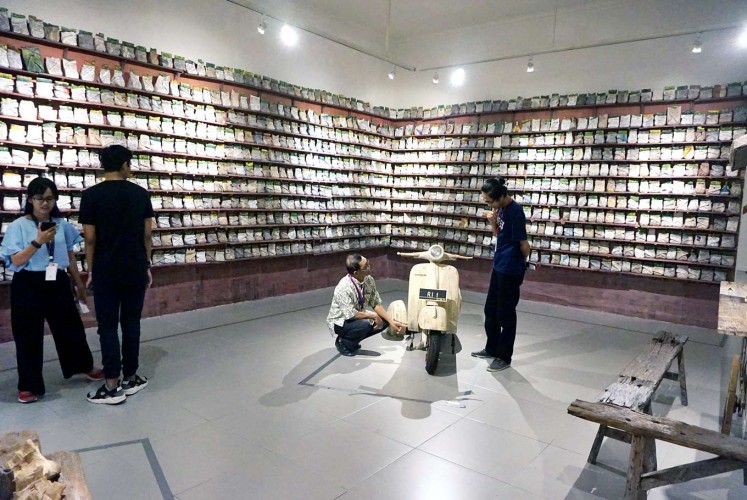
This exhibition displays the essence of his personal and conceptual thoughts, the breath of the nation that has held him in an enduring grip.
Adding to newspaper wrappings is the nasi bungkus (rice meal wrapped in banana leaf) sculpture as a metaphor for the poor.
Filling an entire wall in this exhibition, they appear as a powerful force, equal to the powers filling another wall representing elite figures, such as lawmakers. This accentuates his concern with political foci tending to drift away from the focus on the people.
“Nasi bungkus is a symbol of solidarity and equality. We are all equal as Indonesian citizens,” he says.
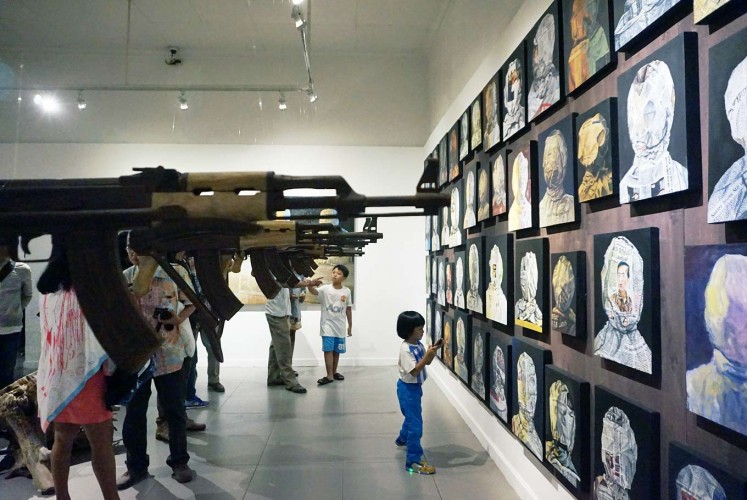
A row of AK4 weapons pointing at the faces on the wall is telling of the artist’s critique. “Up there, they eat nutritious food, while the people have to do with nasi bungkus,” he explains.
While the newspaper wrapping attest to newspapers as witnesses of Indonesia’s past and current history, the wraps around faces and figures also indicate Ubrux’s sharp critique about newspapers.
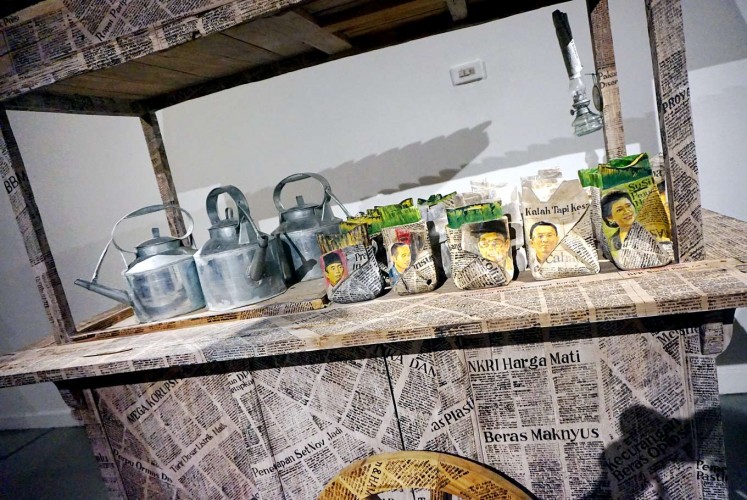
Among his strong feelings of positive and negative forces, a people’s food stall titled Angkringan is positioned as a place where everyday workers use to have lunch and sip coffee.
The food stall carries newspaper pictures of the ruling elite and actual issues and gossip on the nasi bungkus on offer.
In the first row are nasi bungkus with pictures of presidents and figures deemed important such as Sukarno, Abdurrahman Wahid, Maritime Affairs and Fisheries Minister Susi Pudjiastuti and Basuki “Ahok” Tjahaja Purnama, while all other personalities are placed in the second and third rows.
As one enters the exhibition space at Galeri Nasional, a set of chairs around a table might appear as inviting to sit down and enjoy nasi bungkus. But don’t be fooled, it is part of his ongoing exhibition.
The entire installation made of wood and titled Mereka Yang Terhormat is meant to inform of the early budding of streams and movements (including in the arts) directed to the birth of a nation.
Featuring finely painted text and newspaper headlines as part of newspapers hint at De Locomotief, the first newspaper in colonized Indonesia, and other names linked to the national struggle.
This set of furniture installation was handed to national gallery director Andre Sukmana as a gift to augment the gallery’s permanent collection.
But while newspapers are meant to testify as witnesses to what is happening, today our knowledge about newsmakers is often purely from what we read — the real stories often obscured by the sensational headlines and sometimes juicy reporting.
In this sense, things are “wrapped in paper” — newspapers today often run untruthful coverage with facts reduced to nothing, he said.
His oeuvre testify to an enduring sense of nationalism, a never failing concern for the less fortunate in society and a keen innovation of artistic expression.

